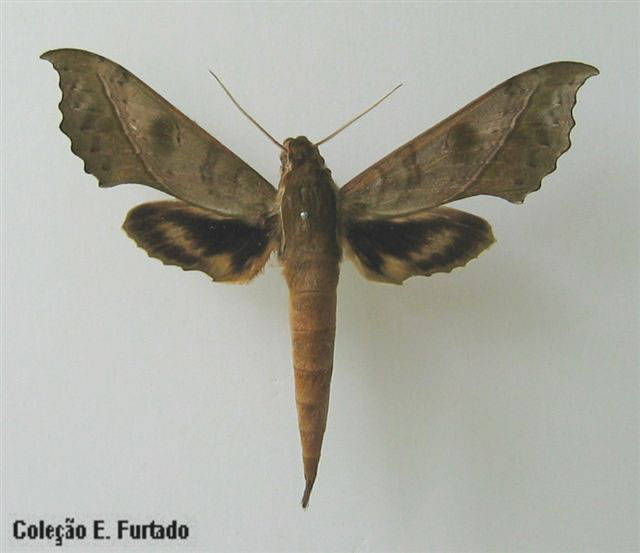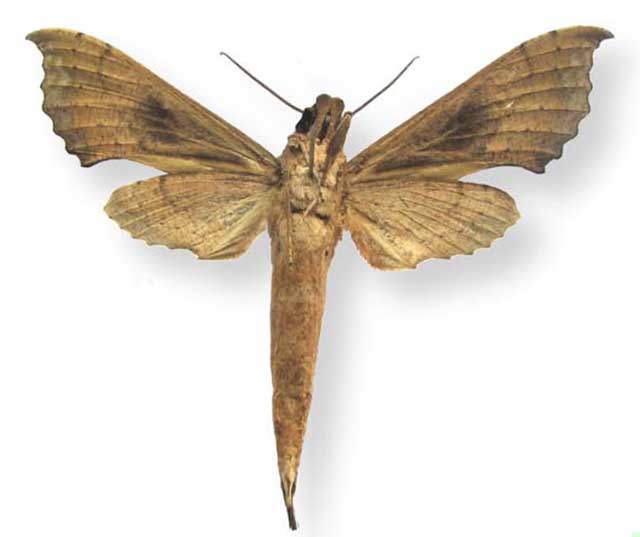Xylophanes furtadoi
Xylophanes furtadoi
Haxaire, 2009

Xylophanes furtadoi male: wingspan: 78 mm, June,
Rio Candeias, Rond˘nia, Brazil, courtesy of Eurides Furtado.
This site has been created by
Bill Oehlke at oehlkew@islandtelecom.com
Comments, suggestions and/or additional information are welcomed by Bill.
TAXONOMY:
Family: Sphingidae, Latreille, 1802
Subfamily: Macroglossinae, Harris, 1839
Tribe: Macroglossini, Harris, 1839
Genus: Xylophanes Hubner [1819] ...........
Species: furtadoi Haxaire, 2009
|
MIDI MUSIC
.....It's a Wonderful World.....
copyright C. Odenkirk
ON.OFF
<bgsound src="world.mid" LOOP=FOREVER>
|
DISTRIBUTION:
Xylophanes furtadoi
(forewing length = 78 mm) flies in
Brazil: Rondonia (specimen type locality).
While I (Bill Oehlke) was doing some research on various Xylophanes species, I noticed that the image above, sent to me as
Xylophanes obscurus by Eurides Furtado, was not such a good match for the CATE description and images of X. obscurus.
I alerted Eurides Furtado, Jean Haxaire and probably Ian Kitching. Jean subsequently named and published (The European Entomologist, Vol. 2, No. 1{2})
a description of the new species
Xylophanes furtadoi. I do not know if they were aware of the discrepancy before I alerted them or not.

Xylophanes furtadoi verso, courtesy of Jean Haxaire.
FLIGHT TIMES:
Xylophanes furtadoi adults
probably fly as at least three broods with a definite flights in June and October.
ECLOSION:
Pupae probably wiggle to surface from subterranean chambers just prior to eclosion.
SCENTING AND MATING:Females call in the males with a pheromone released from a gland at the tip of the
abdomen.
EGGS, LARVAE, PUPAE:
Larvae probably feed on
plants in the Rubiaceae family and Malvaceae families.
Moths emerge approximately one-two months after larvae pupate.
Use your browser "Back" button to return to the previous page.
Goto Main Sphingidae Index
Goto Macroglossini Tribe
Goto Central American Indices
Goto Carribean Islands
Goto South American Indices
Goto U.S.A. tables

